- News
- Reviews
- Bikes
- Accessories
- Accessories - misc
- Computer mounts
- Bags
- Bar ends
- Bike bags & cases
- Bottle cages
- Bottles
- Cameras
- Car racks
- Child seats
- Computers
- Glasses
- GPS units
- Helmets
- Lights - front
- Lights - rear
- Lights - sets
- Locks
- Mirrors
- Mudguards
- Racks
- Pumps & CO2 inflators
- Puncture kits
- Reflectives
- Smart watches
- Stands and racks
- Trailers
- Clothing
- Components
- Bar tape & grips
- Bottom brackets
- Brake & gear cables
- Brake & STI levers
- Brake pads & spares
- Brakes
- Cassettes & freewheels
- Chains
- Chainsets & chainrings
- Derailleurs - front
- Derailleurs - rear
- Forks
- Gear levers & shifters
- Groupsets
- Handlebars & extensions
- Headsets
- Hubs
- Inner tubes
- Pedals
- Quick releases & skewers
- Saddles
- Seatposts
- Stems
- Wheels
- Tyres
- Health, fitness and nutrition
- Tools and workshop
- Miscellaneous
- Cross country mountain bikes
- Tubeless valves
- Buyers Guides
- Features
- Forum
- Recommends
- Podcast
news
Local politician tries telling Facebook followers why more people cycling is a win for everyone... has to close comments "within minutes"; Should TT bikes be banned?; Pro to miss Tour de France after collision with driver + more on the live blog
SUMMARY
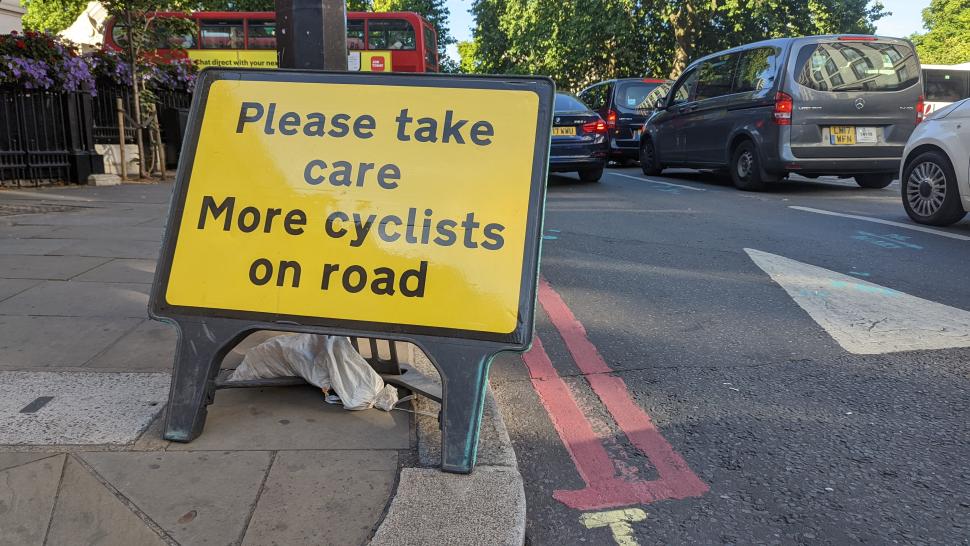 Cycling signs (copyright Simon MacMichael) (6)
Cycling signs (copyright Simon MacMichael) (6)13 June 2024, 14:37
Local politician tries telling Facebook followers why more people cycling is a win for everyone... has to close comments "within minutes"
Nathan Ley is a Liberal Democrat councillor for Abingdon North in Oxfordshire, the local politician taking to Facebook to challenge his followers with an at-length post about the benefits of cycling, not just for those who partake, but for everyone else and society as a whole. Making the case for "why all of us (especially car drivers) should support making it easier for others to do it around town". Seriously? You tried converting people on Facebook?! The home of sensible, nuanced discussion? Tough gig that one...
Nathan reported having to "turn off the comments within minutes" after it "started to kick off with tabloid lines being trotted out", but stood by the fact "we have to challenge people sometimes". So what was the unforgivable pro-cycling writings that attracted the keyboard warriors? Here's the post in full, reshared on the secondary home of sensible, nuanced discussion... Twitter...
I challenged my Facebook followers by posting about cycling. I had to turn off the comments within minutes, but I repost it below and hope you will read - thank you
********************
🚲 𝗥𝗶𝗱𝗶𝗻𝗴 𝗮 𝗯𝗶𝗸𝗲, 𝗮𝗻𝗱 𝘄𝗵𝘆 𝗔𝗟𝗟 𝗼𝗳 𝘂𝘀 (𝖊𝖘𝖕𝖊𝖈𝖎𝖆𝖑𝖑𝖞 𝖈𝖆𝖗… pic.twitter.com/zcJduyls4V
— Cllr Nathan Ley (@LeyNathan) June 13, 2024
Let's dive in. Nathan concluded his post: "When something so simple is so transformative for ALL road users, I'm happy to put my neck on the line for it, and I will sing about it occasionally. Please consider joining us if you can, and make Abingdon a shining beacon of an example — for as long as I'm here I promise I'll try and make it easier for everyone to do so, if you want to."
In the preceding 1,000 words he outlined all the reasons why he's come to this viewpoint, starting with the reasons to ride a bike, before (perhaps even more importantly for those unconvinced) moving on to list reasons why more cycling benefits people who don't cycle themselves.
In the first section, the well-known pros of cycling are given a shout-out: health, environment, cost savings, supporting local businesses, safer roads, community spirit.
"BUT..." Nathan wrote. "Here is why the real winner and why I think we should all care, even if you have no intention of ever jumping on a bike."
"And finally, in a virtuous cycle….Encourages Efficient Public Transport: A decrease in road congestion can also benefit public transport systems. Buses can run more smoothly and on schedule, making public transport a more attractive option for commuters and further reducing the number of cars on the road. It's chicken and egg. If Oxford Bus Company could be guaranteed less traffic then they would invest in more routes, more vehicles, more drivers, and options for everyone would be more plentiful."
Quite outrageous, I know... outrageous enough for a comments section pile-on anyway...
It went down better with Nathan's followers on Twitter at least:
Agree. As you say, it's hard to get that point across in writing. Need to give everyone a free day with an eBike and say "go off, have a play with this" and so many opinions would be transformed.
— Cllr Nathan Ley (@LeyNathan) June 13, 2024
Richard J Law: "Well said. I think that, for the most part, the angry minority really have other issues & just live in a divisive world where they are encouraged by the media to blame others for their problems without the intervention of logic or empathy. Ride on."
Raoul Morley: "This is excellent, I'm a late driver I passed today, and have used a bike my entire life as my main means of transport, and still will. Everyone wins with more cycling, there's less traffic and a healthier and happier population."
Johnny Plectrum: "Unfortunately social media discussions regarding cycle use invariably fail as there appears to be a good percentage of motorists that don't understand that it's not one or the other. Choice is permitted. The right vehicle at the right time is my motto."
13 June 2024, 16:30
Raleigh owner Accell's credit rating downgraded for fourth time in a year, as group's cargo bike company slammed for "shambles" recall of faulty frames
13 June 2024, 15:26
UAE Team Emirates domination sees Adam Yates take Tour de Suisse stage victory
As if Tadej Pogačar needed any more help. As if just being a ridiculously talented freak of a cyclist wasn't enough, his teammates that'll be helping in his aim to reclaim the Tour de France next month aren't half bad either.
So let me get this right, you're bringing Juan Ayuso, Adam Yates, João Almeida, Pavel Sivakov, Marc Soler, Tim Wellens and Nils Politt. As we said earlier, not half bad.
Yates and Almeida had their fun at the Tour de Suisse this afternoon, pulling off a 1-2 finish as the Brit extended his lead at the head of the GC, his teammate setting a ferocious pace up the final climb before reeling back in those who'd tried to go with Yates when he launched his stage-winning move.
UAE Team Emirates en démonstration ! Adam Yates conforte son maillot jaune en remportant la 5e étape du #TourdeSuisse devant João Almeida #LesRP pic.twitter.com/evLsIhIJ5m
— Eurosport France (@Eurosport_FR) June 13, 2024
Those riders in question were Egan Bernal, Enric Mas and an impressive Matthew Riccitello, before British duo Tom Pidcock and Oscar Onley came home 30 seconds back.
13 June 2024, 15:12
Revamped Standert Pfadfinder all-road endurance bike gets full internal cable routing and is handmade in the Czech Republic
13 June 2024, 15:09
"These days, this is how I roll": Cycling nutrition tips from Chris Boardman that I'll happily follow
Long bike riding ‘nutrition’
These days, this is how I roll 😀 pic.twitter.com/SC6iBlrh5L
— Chris Boardman (@Chris_Boardman) June 13, 2024
13 June 2024, 13:58
Police unsure if driver's "lack of vision" or hi-vis and no helmet to blame for "unavoidable" collision that saw motorist pull out and kill cyclist, inquest finds
13 June 2024, 13:26
Pieter Serry's Tour de France dream over after training collision with driver in Belgium
On the 3rd of June I was hit by a car during a training ride. I was transported immediately to the hospital where I was diagnosed with a heavy concussion. Next weeks I’ll need time to recover. Thanks for all the support and good luck to my team! @soudalquickstep
— Pieter Serry (@Pieter_Serry) June 12, 2024
Soudal Quick-Step veteran Pieter Serry, a domestique who has started 17 Grand Tours in his career but never the Tour de France, will not be making his Tour debut this year after being hit by a driver.
The Belgian rider fortunately escaped without any fractures but has a bad concussion, the 35-year-old telling Het Nieuwsblad that while "there is no sign" of the crash except some "minor" cuts and bruises, he is seeing double due to the concussion.
Having ridden the Giro, Serry enjoyed a week off, returning to training last week in the hope of being one of the Soudal Quick-Step riders to make Tour selection from a 10-man longlist, an ambition the crash has now brought a premature end to.
"I hope to be able to start training on the rollers this week," he said. "It remains to be seen when I can get back on the road. It is difficult to set new goals, but I hope that I can do an altitude training course with the team in the summer and ride the classics or the Vuelta again in the autumn."
Elsewhere in the Belgian domestique news round-up, it is believed Victor Campenaerts will be joining Visma-Lease a Bike once transfers can be announced on August 1. It is reported Campenaerts will join at the start of next season with an eye to being a cog in the Dutch outfit's formidable Tour de France line-up, signing a three-year deal.
13 June 2024, 11:40
"Improving public perceptions and expanding diversity": Cycling UK announces new "transformative" five-year strategy
Cycling UK has outlined its five-year strategy aiming to get more people to recognise the wellbeing, health and environmental benefits of more people riding bicycles. With five strategic objectives, the charity will focus on improving public perceptions of cycling, boosting the diversity of cycling, making cycling a more positive experience, increasing transport choice, and further raising the profile of the organisation and increasing its charitable impact.
Noting cycling's place as "another focal point of the culture wars", Cycling UK says it feels a responsibility to create a wider public support for cycling, support that can contribute to safer spaces and persuading policymakers to introduce cycling-friendly policies and investment.
Looking at the numbers that suggest the aims are possible, Cycling UK highlights that 60 per cent of all car journeys in England are under five miles, 77 per cent of the UK agrees that it would be better if more people cycled, and 65 per cent want roads changed to protect cyclists and pedestrians from cars.
> Does cycling policy need a reset after the election?
Sarah Mitchell, chief executive of Cycling UK said: "The next five years is a pivotal time for us to demonstrate the wider benefits of cycling. As some politicians have sought to reframe cycling as a culture war issue over the past year, using rhetoric to divide all road users, we are acutely aware of our responsibility to remind people of the overwhelming positive impact of cycling. We already know cycling is a fantastic transport option for millions of people across the UK, and we want even more people to see how it can improve public health, boost wellbeing and enhance our environment."
To coincide with the announcement, the film above was made, Cycling UK working with author and poet Erin Bolens and production company Manto Films.
13 June 2024, 11:07
Royal Parks cancels Richmond Park time trials over fears cyclists will break 20mph speed limit, after inquest into pedestrian fatality in "speeding" cyclist collision "brought this activity to people's attention"
13 June 2024, 10:13
British Cycling one of more than 200 sport bodies calling on party leaders to use general election to commit to making the UK the most active nation in Europe
Today we’re joining @sportrectweets and more than 200 others in calling on party leaders to #TakeTheLead and prioritise sport and physical activity ahead of next month’s general election 🚴⁰⁰Read more 👇🏼 https://t.co/sj3qxEK9No
— British Cycling (@BritishCycling) June 13, 2024
The coalition of more than 200 athletes, businesses, charities and bodies across health, sport, recreation and physical activity has penned an open letter through the Sport and Recreation Alliance.
British Cycling is joined by Rebecca Adlington, Ugo Monye, Adam Olaore, Darcey Bussell and numerous others in demanding party leaders take the "unique opportunity" presented by an election to prioritise sport and recreational activity.
"To overcome our national health crisis and deliver economic growth, we believe you must commit to the ambition of making the UK the most active nation in Europe and work with the industry to deliver this vision," the letter states.
According to research by the Sport and Recreation Alliance, "Collectively, the sector already saves the NHS £9.5bn every year by preventing illness and in total generates £85bn annually in economic and social value. However, the value generated by the sector could be far greater if the UK reaches and exceeds the activity levels of its European peers."
If the UK became the most active nation in Europe, the research projects:
- Economic growth – by increasing GDP by £3.6bn every year
- Reduced burden on the NHS – by cutting spending on preventable disease by £1bn every year
- An improvement in people's life satisfaction – by increasing wellbeing benefits to the value of £71bn every year.
13 June 2024, 09:04
County counter counts 43 counties on world record-breaking ride
Scott Mitchell from Endmoor in South Cumbria is now the holder of a world record for... most UK counties visited by bicycle in one week, the BBC reports. Scott actually completed the ride last June, but it has now been confirmed by Guinness, the father (completing the ride to raise money for Muscular Dystrophy UK, a condition his son lives with) riding through 43 of England's 48 counties.
The ride started in Cornwall and finished in Lancashire a week later as Scott raised almost £7,300 to raise awareness about the lack of cure for Becker muscular dystrophy.
"More than anything, I need the world to see what I'm doing, why I'm doing it, and to spread the word," he said. "For Alex, the basics are hard — getting out of bed, getting from room to room — but it affects him mentally as well as physically. The progression of his condition is becoming increasingly obvious and impacts every aspect of his life, which is heartbreaking to watch as a parent."
13 June 2024, 08:53
Edinburgh enjoys record number of people travelling by bike
Cycling Scotland reports Edinburgh is the latest city to see a record number of people travelling by bike, more than 2,000 daily bike trips being recorded on Leith Walk during May, following the completion of cycle lanes between Leith and Picardy Place.
The charity reports nine per cent of all journeys on Leith Walk and six per cent of journeys on Melville Street were made by people on bikes, "a level of modal share rarely seen in Scotland".
A total of 219,070 bike journeys were recorded on Leith Walk between January and the end of May 2024, almost double the number recorded over the same time period in 2022 (117,969).
One Leith resident who uses the infrastructure to cycle to work several times a week said it has made her journeys "so much more relaxed".
"I love how it gives me independence and allows me to get about town," Elspeth told Cycling Scotland. "I find getting around by bike is great for my physical and mental health, and I love the passing waves and nods from other people on bikes in the morning."
Rowan Simpson, Monitoring and Development Officer at Cycling Scotland commented: "Yet more evidence that where Scotland builds networks of connected cycling routes, separated from vehicle traffic, more people travel by bike. We know that road safety is the single biggest barrier to more people cycling, and the early success of Leith Walk and City Centre West to East Link underlines the critical role of safe, convenient, separated cycle routes, if more people are to choose cycling for short and medium journeys."
For those of you who have been visiting road.cc for a while, you'll probably remember it hasn't all been plain sailing...
> Zig-zag corners on "moronic" Edinburgh cycleway to be replaced to improve cycle safety
> Cyclists fed up with "ridiculous" lamppost blocking busy cycle lane for five months
Positive signs at last...
13 June 2024, 07:43
Are time trial bikes too dangerous? Tom Dumoulin "absolutely disagrees" with Annemiek van Vleuten's suggestion to use road bikes, claims time trials are "least dangerous" races
The discussion around the safety of TT bikes has been resumed this week, a duo of legendary retired Dutch riders, Annemiek van Vleuten and Tom Dumoulin, disagreeing over whether the specialist aero set-ups are "dangerous" and whether the peloton would be better off simply using road bikes instead.
Van Vleuten — who won gold at the Tokyo Olympics and was a two-time time trial world champion during her career, but also spent a week in hospital with injuries sustained in a collision involving a driver as she trained on a time trial bike in Italy in 2015 — told Dutch news outlet NOS it is "with a heavy heart" she believes "it would be better to ride time trials on regular (road) bikes again".
"Since then [the aforementioned 2015 collision] I have always been aware of the dangers," she explained. "I have never been able to train uninhibitedly on the time trial bike again. Even though you are cycling at 50km/h where no one else is riding. It is very vulnerable: the brakes are stuck. not near your hands.
"You want to win, it's all about seconds, and then you take risks. Especially when you're in that steering wheel and you're throwing yourself down a hill at 80km/h. Then you just have to trust that things will go well.
"The fact is: we ride much faster than ten years ago. It's going faster and faster. I'm sometimes afraid that something super serious has to happen first before the UCI makes changes."
The argument is nothing new, Chris Froome making the case for road bike TTs after his former teammate Egan Bernal suffered a devastating crash while training on his Pinarello time trial bike in Colombia, Froome himself having also suffered career-threatening injuries in a crash while training on his time trial bike at the 2019 Critérium du Dauphiné.
"Is it really necessary for us to have time trial bikes in road cycling?" Froome said two years ago. "Being out on my time trial bike this morning, and in light of recent events, time trial bikes are not really meant to be ridden on the roads the way that we need to ride them in order to be ready."
Tom Pidcock too has said he believes time trial bikes are too dangerous for riders to train on public roads. At the time of the 2022 discussion, Froome's teammate Michael Woods said he believes "the majority" of teams, manufacturers, mechanics and staff would be "pretty happy" ditching TT bikes.
However, Bernal, whose crash sparked plenty of debate about road bike TTs and whether time trial bikes are safe for training on open roads, acknowledged that while it is "more dangerous", the time trial bike is part of the fabric of the sport and "without it cycling wouldn't be the same".
He said: "Time trialling is part of the spectacle of cycling and it's something a lot of riders and fans like. So I think they should stay."
In September, Stefan Küng's bizarre crash straight into barriers at the European Championships prompted former UCI chief Brian Cookson to call on the sport's governing body to crack down on the "crazy trend" of riding head down in time trials, riders sacrificing being able to see where they are going in search of aero gain.
Jumping back to the present day, Tom Dumoulin "absolutely disagrees" with Van Vleuten and co. and does not "understand what is dangerous about time trials", suggesting that riders probably rode head-down less in the past.
"I think it is the least dangerous part in the entire sport of cycling," he said. "Riders fall much more often on road bikes than on time trial bikes. Just add up all the falls. So I don't see a pattern yet, to be honest.
"As a rider, you understand that if you want to look down during time trial, you shouldn't do that on a road with a lot of traffic? I always did my time trial blocks along the canal where no one comes, and certainly no cars. I also rode in hilly landscapes, but then I didn't look down all the time."
The former time trial world champion added that if the discipline were to be moved to road bikes, teams and riders would just look "for other ways to gain profit with even more dangerous bicycle designs".
"Then you end up with far too long stems or strange positions on the bicycle that are completely unsuitable for riding in a peloton," he said.
Dan is the road.cc news editor and joined in 2020 having previously written about nearly every other sport under the sun for the Express, and the weird and wonderful world of non-league football for The Non-League Paper. Dan has been at road.cc for four years and mainly writes news and tech articles as well as the occasional feature. He has hopefully kept you entertained on the live blog too.
Never fast enough to take things on the bike too seriously, when he's not working you'll find him exploring the south of England by two wheels at a leisurely weekend pace, or enjoying his favourite Scottish roads when visiting family. Sometimes he'll even load up the bags and ride up the whole way, he's a bit strange like that.
Latest Comments
- David9694 1 hour 56 min ago
Car smashes into chippy...
- ktache 2 hours 6 min ago
I'm impressed by my DX1000, the keys look difficult for picking, though I'd like to seethe LPL having a go at one. And it definitely feels the part...
- dubwise 3 hours 20 min ago
So cyclists will be punished far heavier than killer drivers. Sums up the fkd up UK.
- HLaB 3 hours 33 min ago
I've done the 312 and other closed roads events like the Etape Caledonia and each time there is bad press like this in advance but on the day the...
- Rendel Harris 3 hours 33 min ago
It's not that surprising that Mr GrumpyGobshite hasn't seen the 20mph limit "stuck too [sic] in 47 years" as it was only reintroduced in 2004, it...
- Pub bike 3 hours 49 min ago
Spiral wound cables can expand and contract and possibly help with brake modulation, as well as make tighter bends. ...
- Burnsy Bhoy 5 hours 10 min ago
My TL200 rear light stopped working after 14 months - it seems IP ratings arent what they say on the tin! I have tried different brands and all...
- OnYerBike 11 hours 22 min ago
I've no idea what the situation is here, but I've seen plenty of "under construction" cycle lanes where there are only signs/barriers around the...
- the little onion 11 hours 29 min ago
whereas the whole point is that they didn't hit you this time
- Tom_77 11 hours 42 min ago
AIUI an entering-circulating accident [sic] would be when the vehicle entering the roundabout fails to give way to the vehicle circulating.
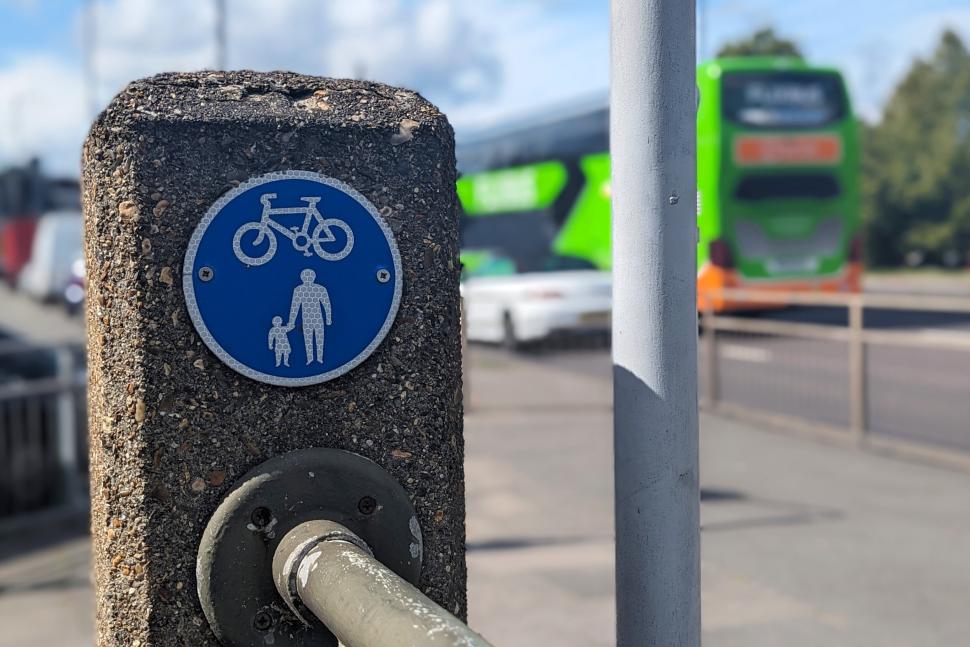
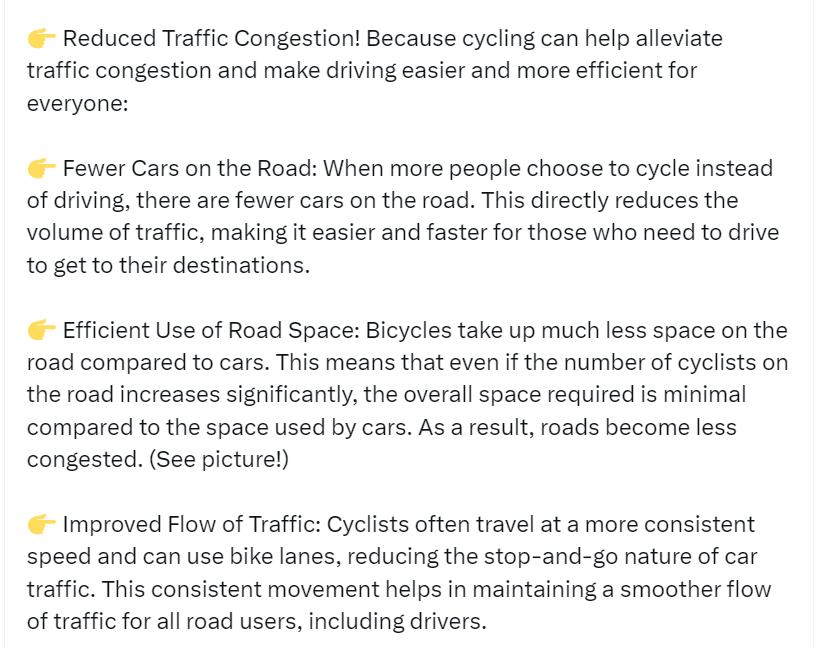
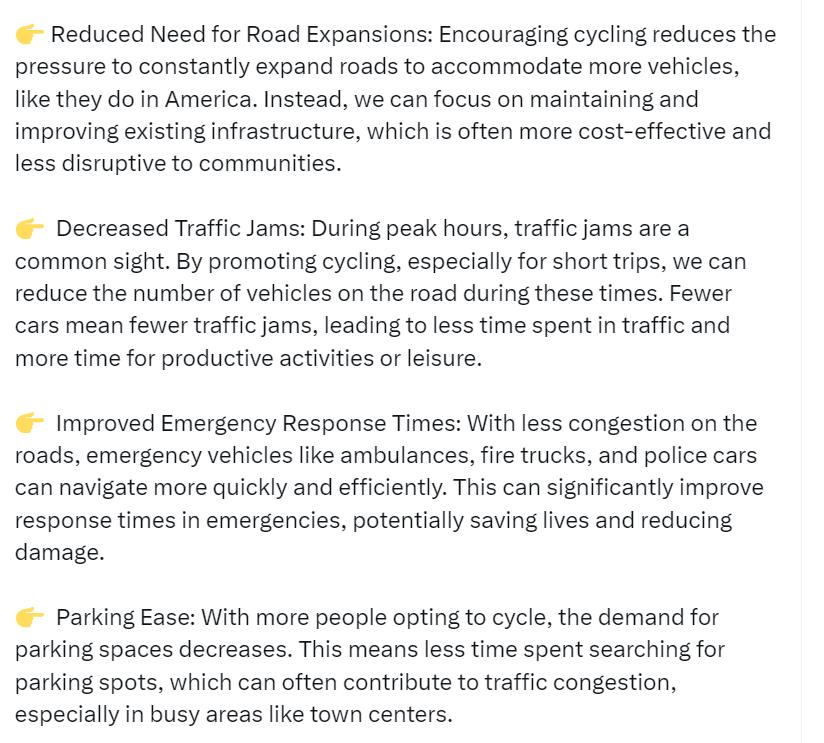
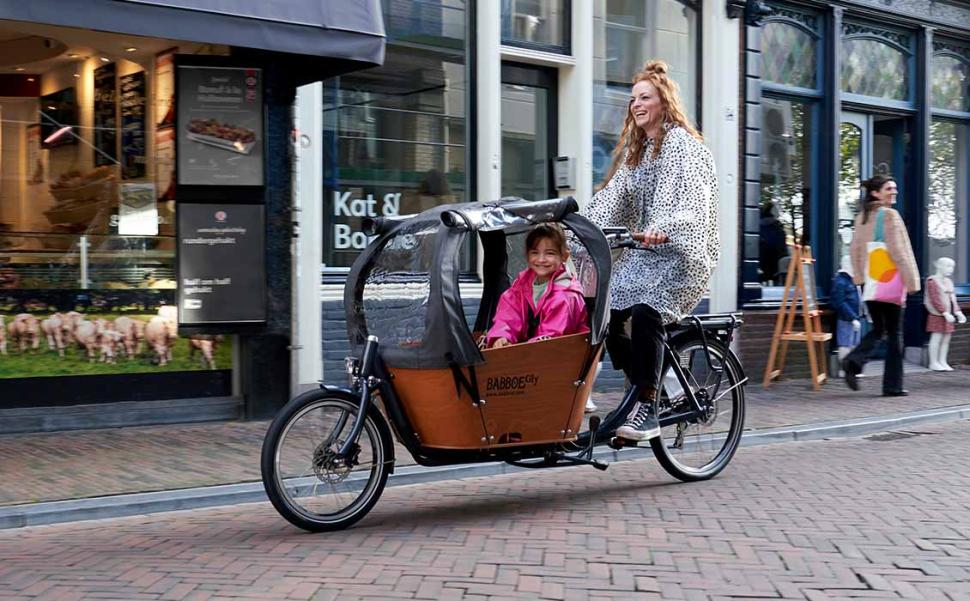

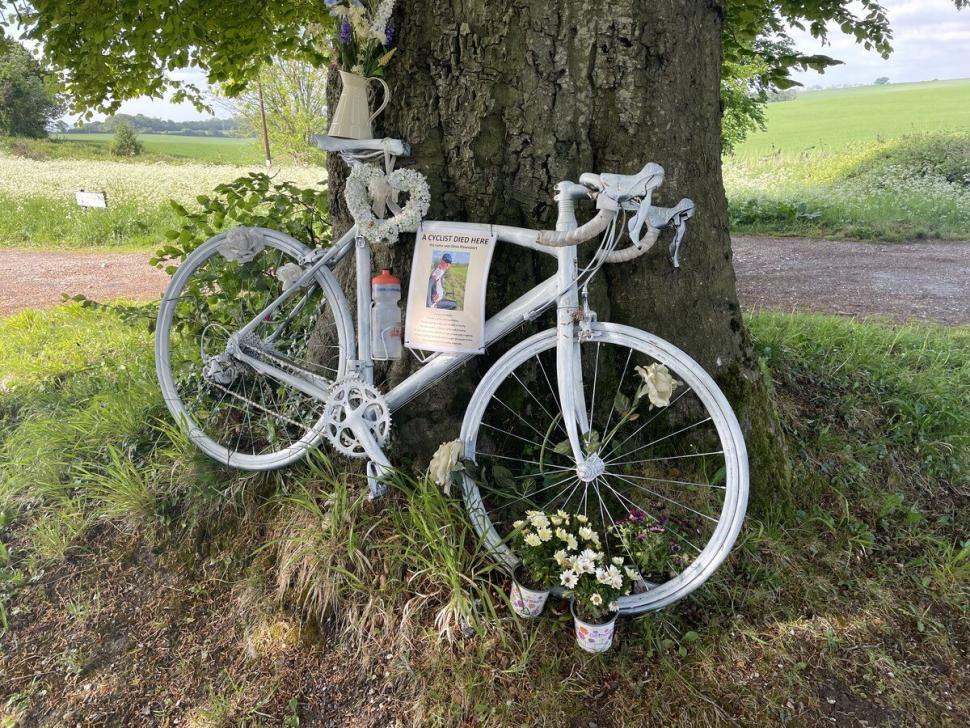


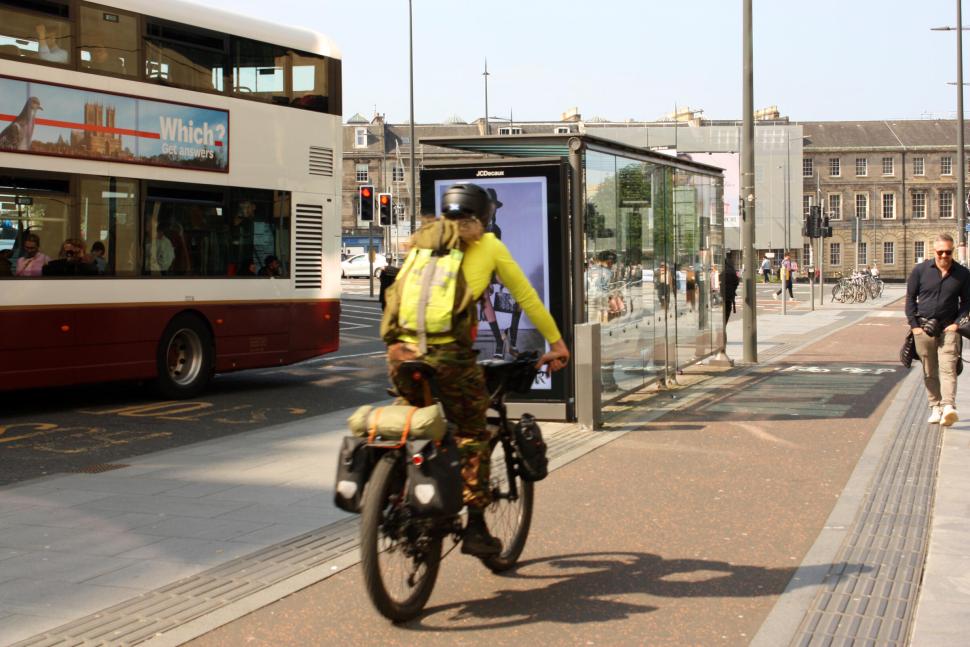
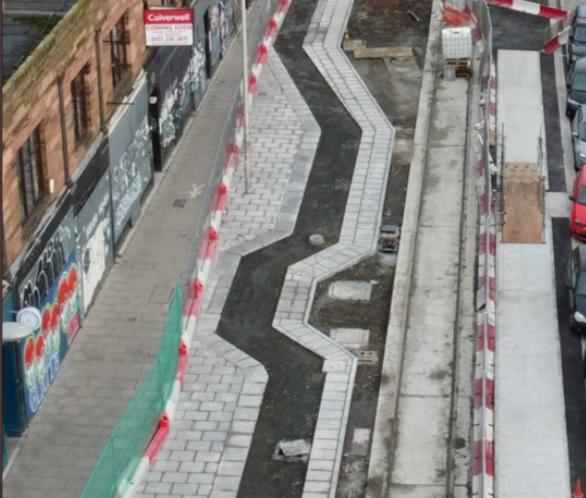
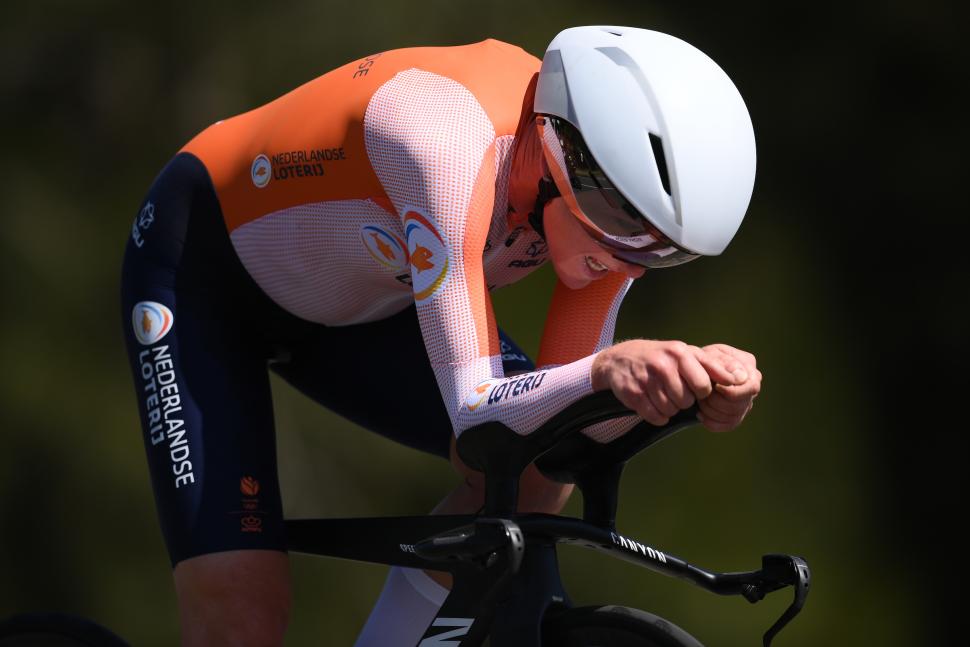

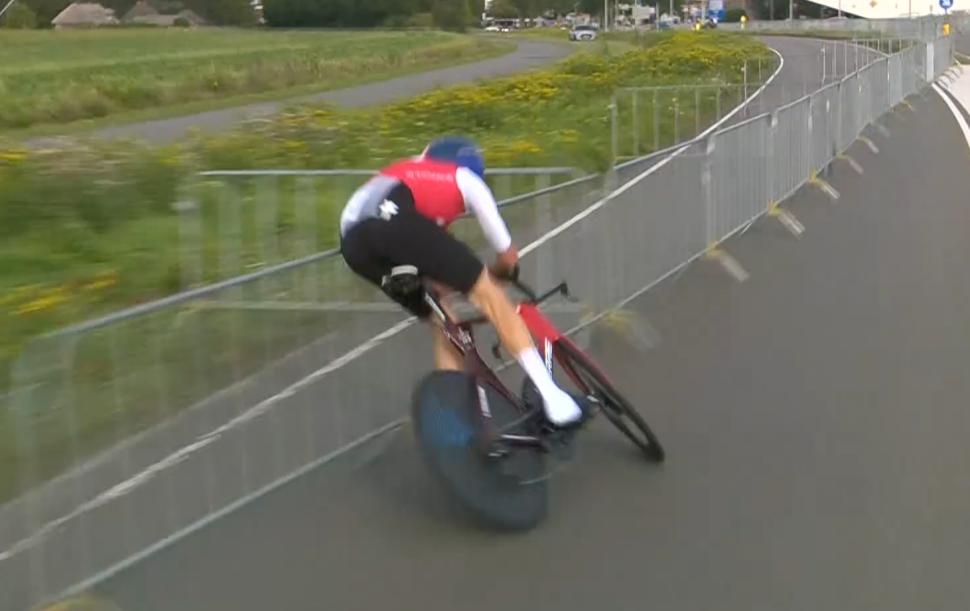
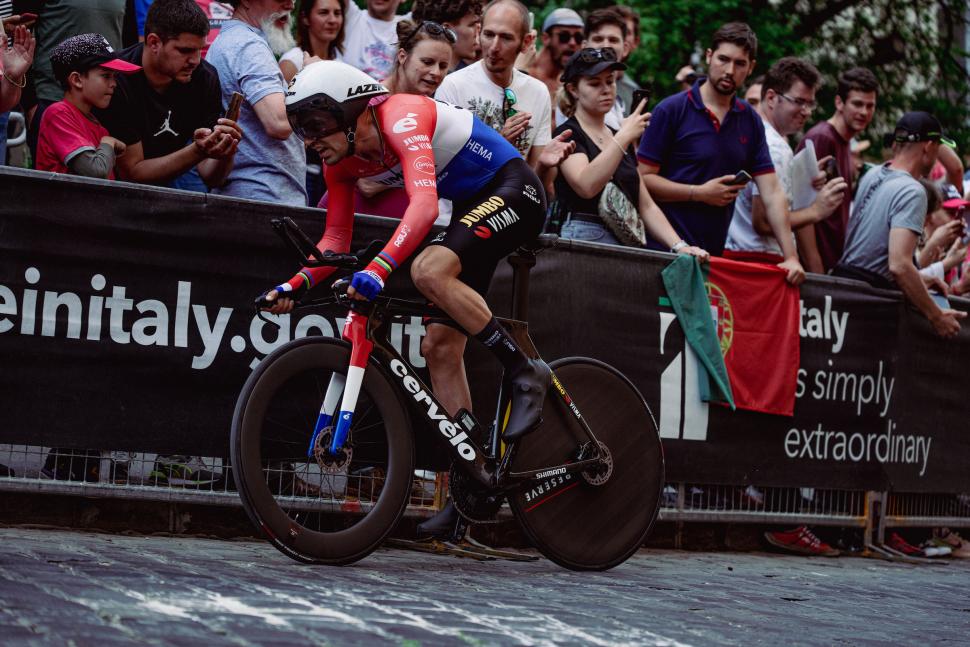
Add new comment
41 comments
We need more bikes but we need more cyclists who ride to the rules and use plain commonsense like having lights reflectors riding on the right side of the road stop at red lights and use the lanes allocated to them not hop up on the pavement to get passed lights . When we have that everyone will welcome cyclists with open arms but what we have now is so bad and dangerous that we need new heavy fines for bad bikers and stop them from driving as well
I do all of the above (except I ride on the left) and I still don't feel welcomed with open arms.
Maybe by "welcome with open arms" they meant "rugby tackle"?
What's a passed light? And how do I get one?
I don't want to ride on the right side of the road. Common sense tells me it's not a good idea. Keep the ideas coming though.
Are we to understand that Boardman is putting oreos in his bottle of drink? Doesn't that rather clog the spout?
Choosing between the Tory and Labour manifestos is like choosing between shades of beige. Both talk of putting 2 hours of PE a week into the curriculum whilst also attacking "the war on the motorist".
Here's a mind blowing idea to get children active; make the roads safer so kids can cycle/walk/scooter to school and get their exercise, break their dependency on cars toward a greener future and reduce the burden on the NHS by instilling the importance of living in good health not ill health.
I cycle to the local gym. Usually there are no other cycles locked up outside, sometimes one or 2. But the car park is full. I never understand why people drive to a gym then spend 20 minutes walking on a treadmill. Driving is so deeply ingrained in culture that people don't see that driving to a gym to then walk on a treadmill is oxymoronic.
I think gym memberships are often used for social signalling which also fits in with people using their brand of car for a similar purpose. It's far more difficult to advertise your social status if you're walking/running in a park and of course you may have to mix with the lower social classes there as well.
There's also the modern trend of separating physical activities from the rest of your life. There's definitely a social stigma to being sweaty which is also a message being pushed by Big Deodorants with a LOT of advertising. Maybe we should be looking to normalise sweaty clothing with clothing that has pre-stained armpit areas?
Mostly women, perhaps? In which case possibly scared by all the meeja stories suggesting they will get raped or murdered if they set foot outside their homes alone, so of course they HAVE to drive to where they get their exercise. Whereas, of course, statistically the odds of anything bad happening on a short walk from home are extremely low.
I think that Facebook is probably the wrong crowd to present with stuff like that, Councillor Ley.
But I'm not sure that Twitter/X/The Musk Show is any better…
With regards to time trial bikes; was Van Vluten suggesting that TT bikes are too dangerous to train on open roads, hence remove them from races otherwise riders have to put themselves in danger in training. I think Dumoulin's comment is that TT races are safe as there are no other riders close. I think some of these view points might be slightly different points (training vs racing).
Relevant to road safety and thus cycling...
I nearly fell off my chair when I red this:
-Mrs Suffield said they never felt they should blame the young driver because
"it could have been any one of the other boys in that car driving".-
The number, or presence, of passengers is irrelevant to safe driving.
Yes, the vehicle was overloaded.
But if a driver is not operating a motor vehicle safely and to the conditions then anything can happen, even if it is just the driver inside.
https://www.bbc.co.uk/news/articles/cgrr917en6do
True.
In the bigger picture though we do need to consider how people actually behave though - sometimes there's more than one way to steer that. There was an interesting point on this raised RE: young drivers and having a number of other young people in the car (statistical observations being that is a major risk factor). Not sure where it started it / original research but it was flagged by the AA and was proposed as part of a "graduated licences" idea in parliament. Last I saw it was still progressing - not sure where next?
"They decided with their youthful excitement to all pile into a small car," he said. "Six of them in a car that was built for four, with a driver who’d only just passed his test.
"Of course if we'd had graduated driving licensing, six wouldn’t have got into the same car."
So is it legal, if the driver has a full licence, for six to pile into a car built for four?!
Well... that was 1986. AND in Loughborough...
Currently:
https://www.gov.uk/seat-belts-law
Unfortunately if this happened now I suspect they would be fined "up to 500 pounds" (e.g. zero) as presumably you'd have to prove who didn't have one AND I'd guess this would be seen as "persecuting innocent young victims of a tragedy"...
Meanwhile - don't try this at home...
Cycling Scotland news article here.
While this is all good we should keep in mind the potential when you have mass cycling: on the "busiest in the Netherlands" there can be more than double that 2000 daily total in an hour. Anyone got any London numbers?
I suspect much of the increase in counts is due to takeaway delivery cyclists. This has been a massive recent "growth industry" - plus of course they're doing multiple journeys over their shift - and in some cases this will be repeately past cycle counters e.g. particularly up and down Leith Walk.
That may still indicate some improvement to conditions but "acceptable for below-minimum-wage delivery folk to use" is NOT the same as "going to encourage mass cycling".
The journey counts on Melville Street are perhaps more interesting. I think that represents a (slightly) broader demographic of cyclist. It is it's part of the route from the West / Northwest into town and also connecting to rail transport at Haymarket. From my observations (mostly evenings so that will skew things) the dominant form of cyclist on Leith Walk is - by far - the delivery cyclist.
I saw this headline and couldn't believe that it is true
Eastleigh man died after unavoidable accident, inquest hears
They say unavoidable and then go into victim blaming about clothing and helmets
https://www.dailyecho.co.uk/news/24383541.eastleigh-man-died-unavoidable...
That's horrific. The collision was clearly avoidable if the driver just hadn't pulled out in front of the cyclists.
Just read the article and couldn't believe it either. How can a collision like this be deemed ''unavoidable''? And trying to deflect blame from the driver is just despicable.
https://tinyurl.com/463bcts4 (streetview of location (with ghost bike))
So, it was unavoidable to pull out from a side road when the cyclists were approaching? I'm sure the Highway Code would not agree, but doctor?
The doctor in the car said she drove there every day as part of her work commute and had not seen the pair until it was too late.
She got out of the car and gave CPR to Mr Davenport until paramedics could arrive.
Mrs Rhodes-Kemp read a report prepared by Hampshire police investigating the collision, which had concluded: "The collisions could not reasonably have been avoided".
The report said Mr Davenport was not wearing a helmet when the incident occurred and that he and Mr Martin were not wearing high-contrast clothing during the ride.
As it was daytime, the pair were also not using lights.
It also found that the view of Woodman Lane turning right from Sarum Road was obscured by trees and signs.
Think we need to know the context of "The collisions could not reasonably have been avoided".
If the police report is saying the cyclists could not reasonably avoid the collision that would be correct. If they're saying the driver could not have reasonably avoided the collision then I'd disagree. We all know drivers are in control of the decision to pull off from a junction.
That report is a difficult read and hard to swallow.
Look at the junction. https://www.google.com/maps/@51.0608072,-1.3809199,3a,90y,270.26h,84.61t/data=!3m7!1e1!3m5!1sqwIYhCikrHTPRDjolSyqkA!2e0!6shttps:%2F%2Fstreetviewpixels-pa.googleapis.com%2Fv1%2Fthumbnail%3Fpanoid%3DqwIYhCikrHTPRDjolSyqkA%26cb_client%3Dsearch.revgeo_and_fetch.gps%26w%3D96%26h%3D64%26yaw%3D286.98105%26pitch%3D0%26thumbfov%3D100!7i16384!8i8192?coh=205409&entry=ttu
Dr Robson it seems pulled out of a junction across two cyclists, one dies and the coronor declares it an 'unavoidable accident' !! Why was she not prosecuted for undue care and attention? If that had been two cars and someone had died, would the outcome be the same? What the hell - how was it an accident.. how was it unavoidable? This makes no sense. The poor family having to hear that. This appears to be a disgrace!
We can only speculate without reading the coroner's report - although as you note the mention of PPE is maybe concerning. Things which might have steered the coroner: the "view obscured by signs and bushes" (judge for yourselves) and "who ran into who" (also unclear) - but again this is speculation.
Also not sure whether this had any bearing but it sounds like the road markings may have been unclear or absent? An article notes they have "returned".
Another "cyclists saw car, but driver says they didn't see cyclists" one though.
Junction as seen from the cyclists' viewpoint AFAIKS here - now with ghost bike.
Driver's view - assuming they were travelling east-west - but from article I also can't tell for sure exactly which side of the junction they were on when they pulled out.
There's a brief note here remembering the cyclist.
Confirmed: https://www.cyclestreets.net/collisions/reports/2021440223675/
This just makes the coroners report more shameful.
Is it possible to appeal a coroners report? Or ask for a second opinion?
Incredible. Yet another green-light to kill and maim cyclists without fear of punishment.
This bit is quite telling from the (presumably) OIC:
"The coroner read out a statement from PC Anthony Clifford which said: “I am aware that the family have found that report difficult. I am sorry for their distress.
“I do not know why Dr Robson did not see the two cyclists. If it was for lack of high contrast clothing or lack of vision.
“While the general advice is to wear a bike helmet for protection, we will never know if this would have made a difference.”
Ie: The family are equally as shocked at the report as we are. Let's face it, it was 'lack of vision'. If you don't look, you can't see hi-viz.
Basically having attended the scene, he cannot identify any reason why they couldn't have been seen. no physical obstruction, no environmental or lighting issues. But despite this the officer speculates and the court accepts there must be a reason other than driver carelessness, perhaps cyclists clothing. No suggestion it had been dark, or rainiy or foggy to justify why hi vis clothing is needed.
If the other cyclist hadn't testified the car had been stopped while they approached, I'd suspect driver pulling out without stopping at all, because nothing ever comes down that road.
I think that is exactly hitting the nail on the head about our general attitudes.
In the absense of any significant additional sign of wrongdoing or unusual lack of care (the mere fact of crashing doesn't show anything) we've got to find some reason beyond just that "the driver did something wrong".
Again don't have the inquest detail but it there is no mention that the coroner *didn't* accept the cyclist's report that they saw that car, and it was stopped. There is no mention of blame for the cyclists for not slowing or stopping.
So shouldn't the implication be "the driver proceeded when the way was not clear - others were proceeding (perfectly reasonably). Given that the driver did so when the cyclists could see them they cannot have carried out proper and effective observation before making a manouver"?
Why don't we follow the line of thinking above? I think it's the usual story - driving is a normal activity. People do it all the time. Almost every time we drive (obviously every time I drive...), nobody crashes, dies or even gets injured. Drivers are responsible people - nobody wants to inflict suffering, or cause themselves inconvenience (damage to car, getting involved with the legal system).
And yes - it's a complex world and as noted crashes can be the results of a series of events. Culpability may not lie solely with one person. Perhaps it's true that the junction wasn't as well maintained or even designed as it could be? But ... again the rules seem to be clear - you shouldn't just proceed if you cannot tell that it's safe to do so.
Pages